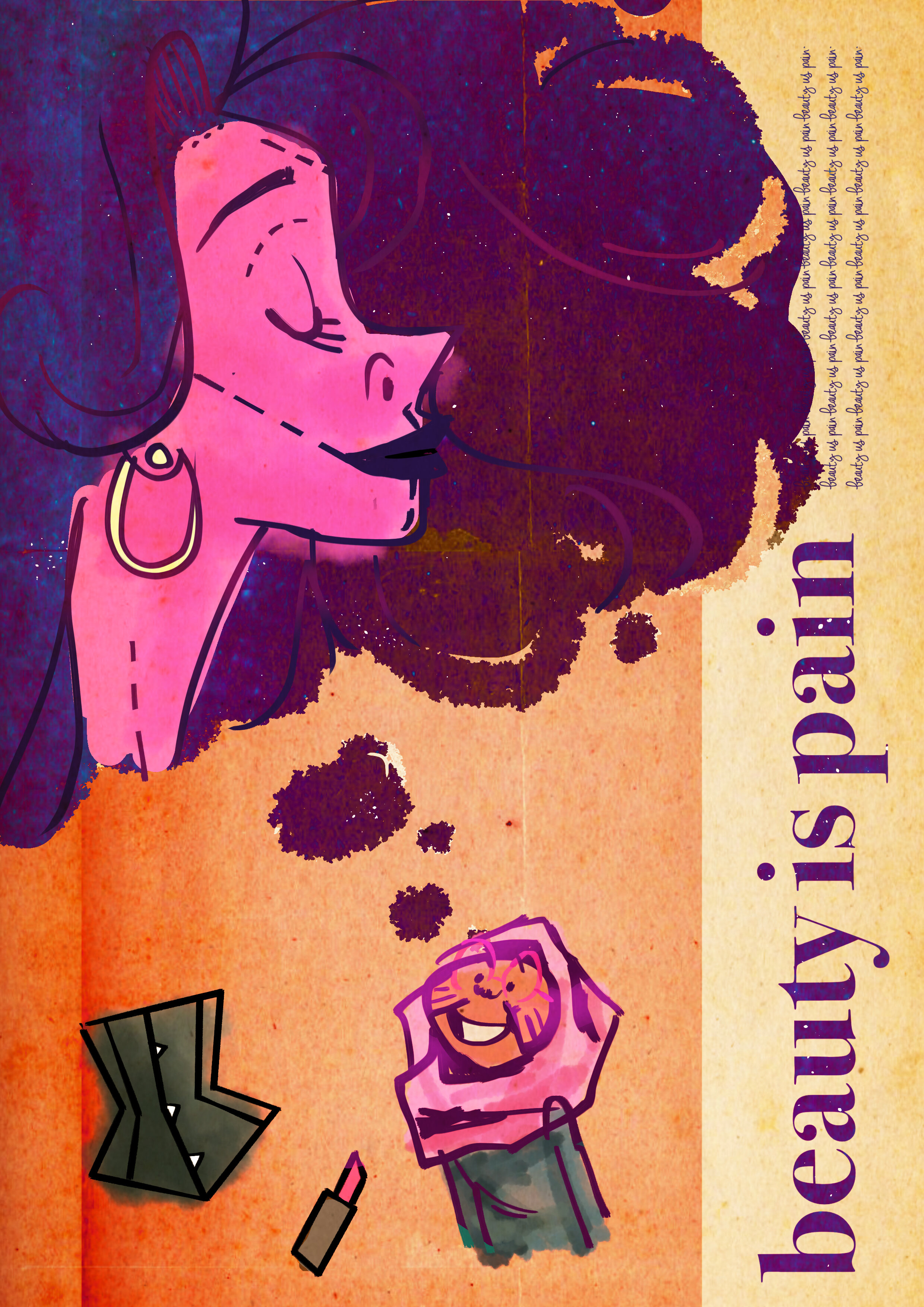Beauty Is Pain
By: Nadine Hernandez
Image by: @floontoon
Beauty is reflected in different ways as each individual has a different upbringing, it's necessary to understand the complexity behind this phrase and how it is dressed on faces of different diversities.
Symbols of beauty were introduced to me when I was as young as seven years old, it meant testing your personal limits for the desired overall appearance of yourself. Growing up in a Hispanic household, my mother often scolded me in Spanish, the sacrifice of pain for the means of beauty as she continued to yank my hair with a brush, and drenched with hairspray. Since my mother dressed me at that point of age, she stressed sucking in my stomach everyday to create an illusion of a smaller one, with the help of a corset of course. The "personal sacrifices", she would call it, doesn't only exhibit these characteristics in my culture, but others around the world.
Today, I reflect on the symbol behind beauty and how it is significant in not only my household, but as well as other cultures like China, India, Iran, Egypt, and Italy.
Beauty is defined as, "A combination of qualities, such as shape, color, or form, that pleases the aesthetic senses, especially the sight.", we tend to have an unbreakable habit of acting as our biggest critique it questions the lengths, if any, someone is willing to take to acquire a stronger sense of self-love. A few examples include, but not limited to: high-heels, corsets, waxing, threading, or micro-blading eyebrows, foot-binding, excessive indoor or outdoor tanning, plastic surgery/ body modifications, rigorous diets and weight-loss supplements. In a world that is heavily influenced by the idea of perfection due to social media, these factors increase the desire to look like a model or known as an, Instagram influencer.
Foot-binding originated in the 16th-century from the southern region of China beginning in the Royal Court. The process sums up to a total of two to three years involving the painful practice of bending the toes underneath the sole using large ribbons wrapped to the bottom of the ankles to sustain the position forcing the bones to break into a 'lotus' shape. At the time, it was considered physically attractive to Chinese men and symbolized status, beauty, and a hand in marriage. Foot-binding was banned in 1912, but these practices were still being done in secret up until 1949.
Eyebrow threading began in the Eastern-culture of India and Iran, the goal is to define the eyebrows and avoid a heavy uni-brow. Essentially, it was a marker for adulthood and marriage symbolizing the purity for women and virility for men. It consists of a repetitive stroking motion with a twisted cotton thread that yanks the hair out of the root. This practice is still being used today and can be found in malls, nail salons, or as a local business in your community.
High-heels were originally created for men. The higher the heel meant the higher in authority reflecting a sign of power. Originating in Italy, corsets give women the desired smaller waist and larger bottoms, today commonly known as the, "hour-glass figure", symbolizing a female's sexuality.
Lastly, other forms of sacrifice include paying the expenses to achieve a desired look, which is often plastic surgery, breast implants, botox, lip-injections and so on. Others may also look into indoor and outdoor tanning to capture a bodily 'glow'. Beauty is projected in different forms and will change throughout time, but being happy with yourself is what makes you truly unique and beautiful.

